Tejumola Adenuga is renowned for his intricate ink drawings on paper and canvas that tell a visually captivating by utilizing discovered images and eliminating any excess information. He recently evolved his practice to creating furniture inspired by fictional West African mythology using aluminum as a new medium. The pieces speak about an African utopia free from external influences.
A.S: What was your favorite part of creating this body of work?
T.A: There were many favorite parts. I learned a lot of valuable lessons that were very educational. I had never worked in Nigeria before. This is my first time, although I grew up in Ogun State until I was a teenager, and then moved to London. My idea of Nigeria was rooted in a nostalgic and somewhat sheltered perspective.
As I grew older, my visits to Nigeria were from a tourist’s point of view, with a romanticized notion of what life here is like. I appreciated the heat and the hustle which is in contrast to London’s often monotone tempo and temperamental weather. However, living here, I had to learn to be extremely patient and not impose a sense of “Western efficiency”. This was the first lesson for me, as I was used to things happening in a timely manner.

The second lesson was the need to build my own structure. If you want something specific, you must be almost educational in your approach. As for the body of work, I was initially very nervous due to the aesthetic nature of my work, which is very black and white. Nigerian art is usually associated with colour and extravagance. However, the response has been overwhelmingly positive.
I was also aware that impressing Nigerians can be quite challenging. The interesting part was seeing what could be accomplished given the circumstances—I created this entire collection in a hotel room, and my first audience was the cleaning staff. They provided the first constructive feedback. This project is the first time I’ve created a body of work heavily influenced by numerous human relationships, relying on a variety of people. In London, it’s usually just me and my studio.
A.S: So there’s community while you create. Are you firm in your decision of what was eventually created, or the feedback makes you change your mind?
T.A: This experience has made me more assertive, knowing that people rely on my instructions. Regardless of their position, everyone likes to assert their own authority—I’ve observed that phenomenon where everyone is an “Oga” in their own right. You have to be clear and decisive about what you want to do and how you want to do it.
In the same breath, I also want to ensure that if I’m making a mistake, someone can freely suggest, “maybe you shouldn’t do that, or maybe you should try this.” It’s important to listen to the people on the ground. If only one person calls the shots, they might overlook something important.

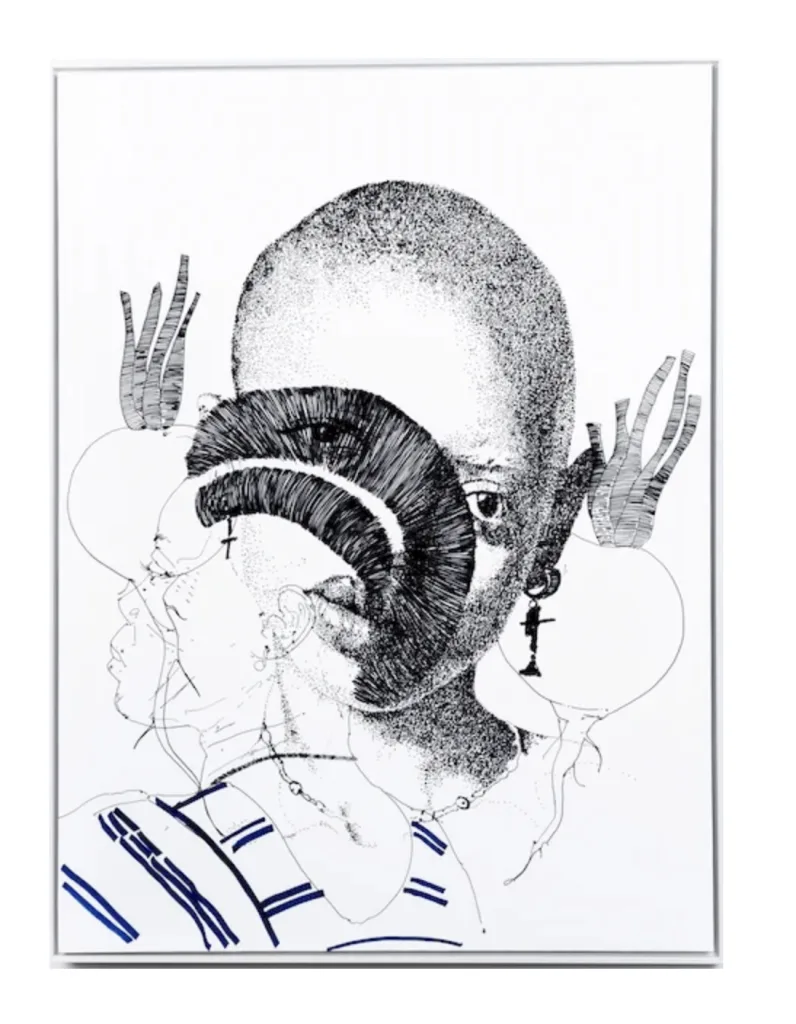
A.S: Your body of work is 40 pieces. Would you say you have a favorite? If so, what is your favorite?
T.A: I am going to generalise and say I haven’t created my favorite work yet. Perhaps I will when I’m 80 years old. I produce art because it feels like an endless flow. It’s like a tank that I empty out, and then it fills up again with new ideas. I always need to empty it once more.
A.S: You need an archive of some sort.
T.A: I always keep a few works for myself from each body of work / series that I present. The aim is to represent them in the context of a retrospective, to allow the audience to see a journey that spans a number of decades.
A.S: What inspired you to become an artist and use this medium?
T.A: I grew up on Imoru Road in a township in Ogun State, which was filled with artisans like cobblers, weavers, and carpenters. Their creative work, often done outside, was my introduction to creativity and left a lasting impression on me.
Initially, pursuing a creative career didn’t seem feasible. It wasn’t until I moved to London that I realized there was a scope for it. I found a way to balance both my degree and my creative pursuits.
I use ink on white paper or canvas because I’m colorblind, and I see things in a more desaturated way. Staying away from color made sense to me, and it allowed me to communicate my ideas quickly. Additionally, as a Nigerian in London, there wasn’t really space to work on large pieces at home, so my early works were small-scale, on A4 paper. I could set up on my bed or with my laptop and produce a lot. These mediums allowed me to create a significant volume of work, and I’ve since scaled up from there and stuck with the same aesthetic.
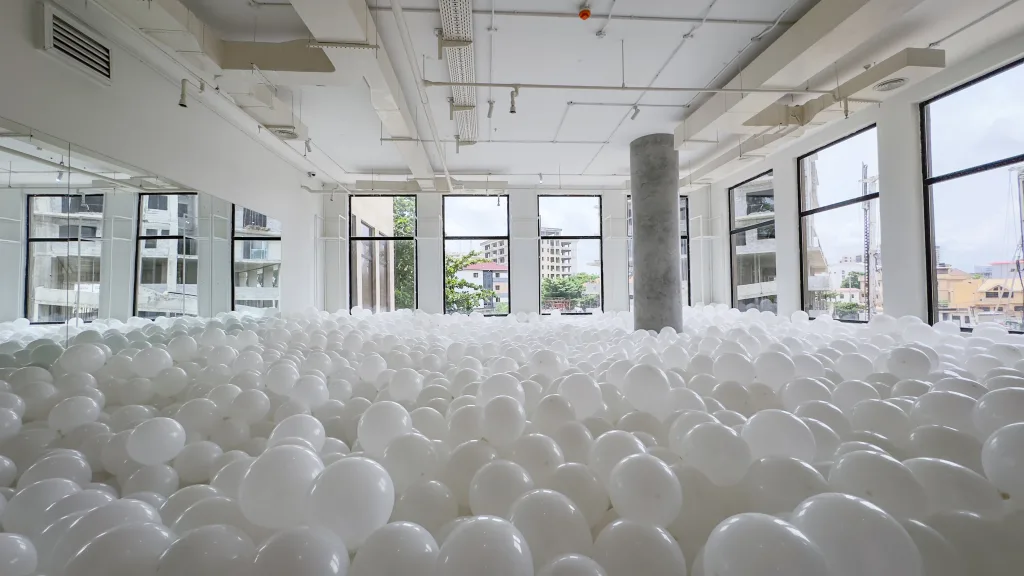
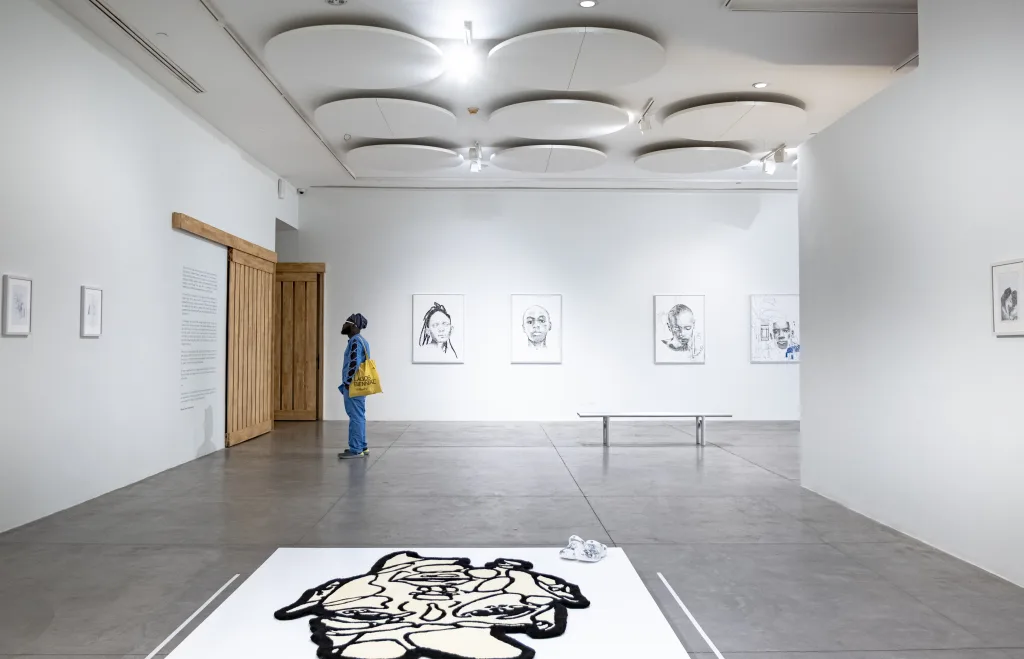
A.S: How do you build the layers in your work and what is the reference to the layers of that?
T.A: When I first started my practice, I focused on singular characters. However, I realized that this approach didn’t convey the depth I was aiming for. I decided to overlay each element of a person’s story on top of their character, giving them a more comprehensive narrative.
I draw directly on top of the initial drawing, which is a daunting but fascinating process. This layering technique often leads people to have a lot of questions about the way the work has been made and the techniques used. This method allows me to communicate the complexity of each character without adding unnecessary elements, and I found it to be a unique way of making art.
A.S: What do you hope your audience takes away from viewing this collection?
T.A: My main focus was to pay homage to my culture, the environment I grew up in, and the artisans who inspired my creative journey.
I know a lot has changed in Nigeria since I last lived here, so I aimed to create a space filled with work inspired by the nostalgic feel of the past, supported by a fictional story. This allows the audience to experience a sense of escapism from reality.
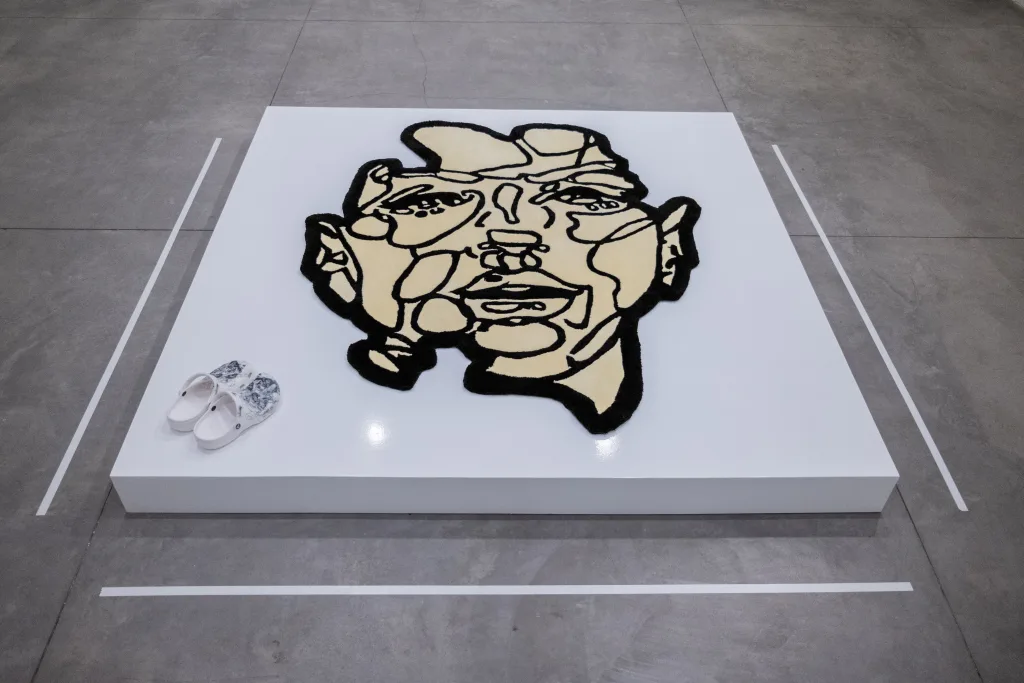
Image courtesy of artist
A.S: That’s very thoughtful. Is there any artist you say has inspired your work or practice?
T.A: Going to go off centre here and say I’m more inspired by architects and designers. Samuel Ross, John Pawson, Tega Akinola, Tadao Ando, Nifemi Bello to name a few.
My art style is akin to reportage, which involves quickly capturing and communicating a scene. For example, you might enter a market where a celebration is taking place and sketch the happenings on the spot. This approach has shaped my drawing style to be both precise and unrefined, allowing me to convey stories in a multi dimensional manner.
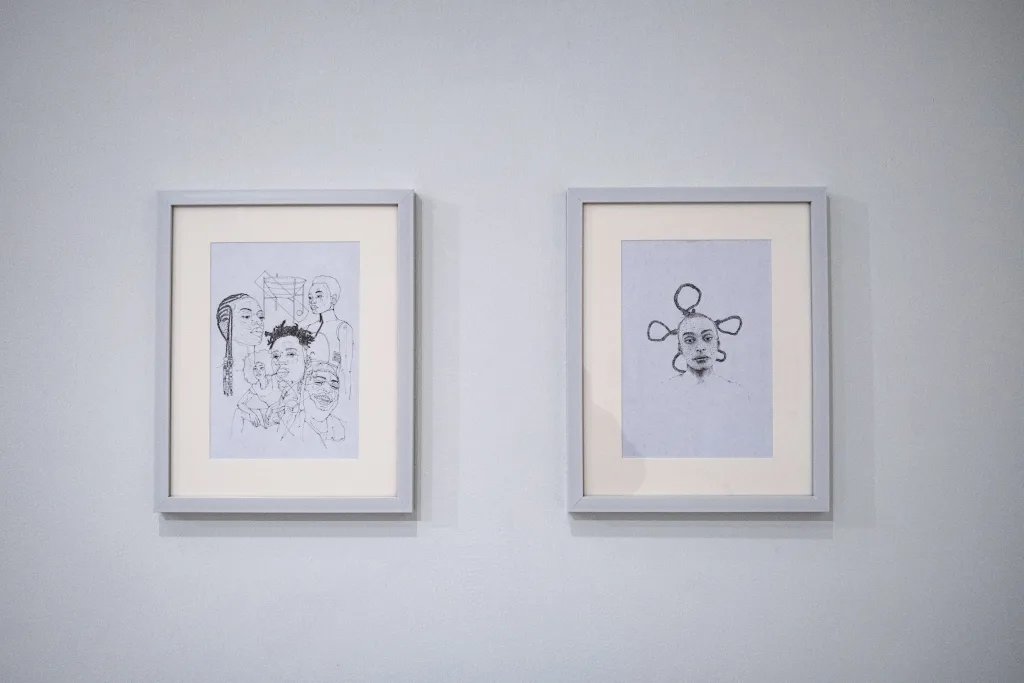
R – Moonflower , 2024, Ink on Paper, 21 x 30 cm
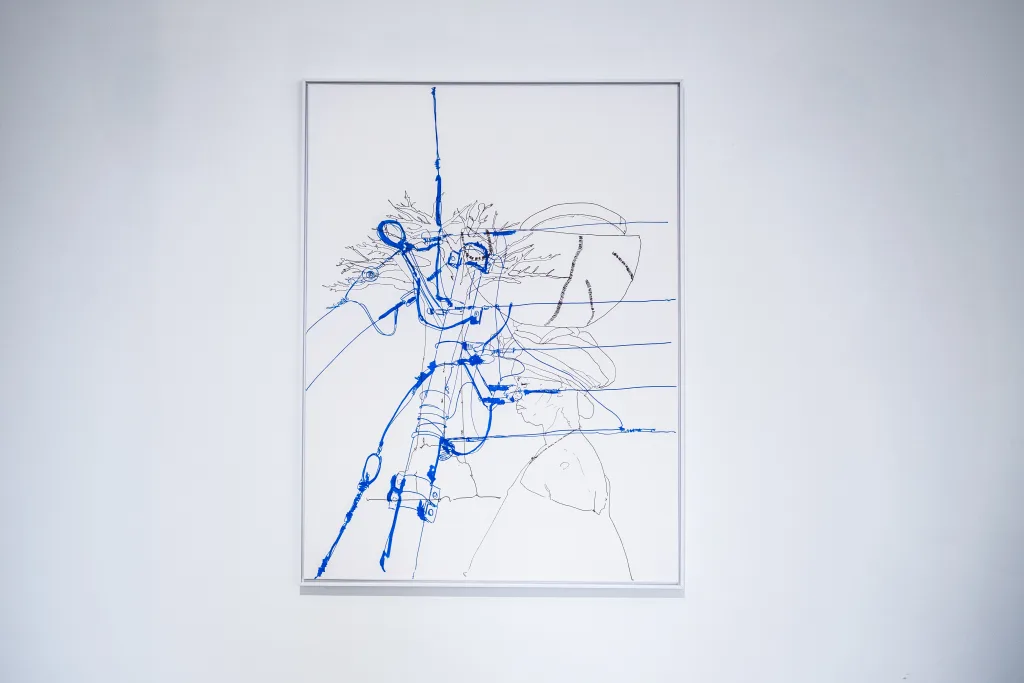
A.S: Last question, what more can we look forward to seeing from you this year?
T.A: I have a project / exhibition i’m launching towards the end of the year, the theme is based around objects for the home. Will reveal more details as the date approaches.
A.S: That’s exciting.
T.A: So what I usually do with my exhibitions, I have an easter egg hunt for the next one, so you look at the lamps and the benches. It’s like a teaser.
For more information and updates on Tejumola, follow him on instagram @butlerarchive.


